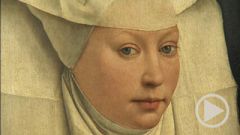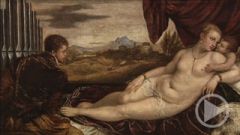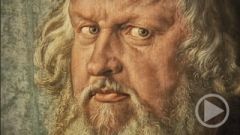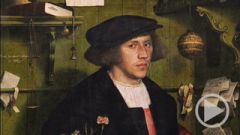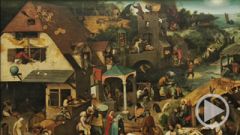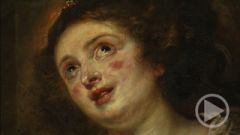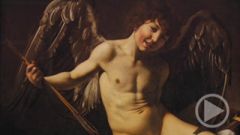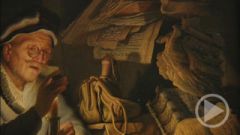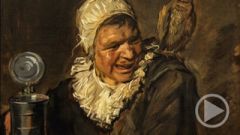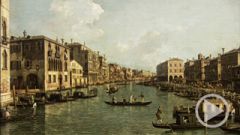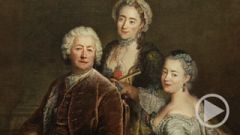- Home
- »
- Germany
- »
- Berlin
- »
- Gemaeldegalerie
- »
- The Berlin Gemaeldegallery -A Metropolis in Quest of the Ideal
A Metropolis in Quest of the Ideal
A Metropolis in Quest of the Ideal
The Carmelite monastery of Santa Maria del Carmine in Florence. In 1421 the monks took in a 14-year old orphan named Filippo Lippi. Twelve years later Brother Filippo was a famous painter. He left the monastery but remained a monk. Until he met Lucrezia Buti in a convent. He was over fifty at the time. She modelled for him, and a short while later they ran away together. The fruit of their forbidden love was Filippino Lippi – who would also become a famous painter. It sounds rather scandalous. But in fact, such things were not uncommon. Filippo Lippi continued to receive commissions – even from the church, as well as his patrons, the powerful Medici family.
15th-century Italy was a patchwork of city states locked in fierce rivalry with each other. The grandest of these was Florence, which was dominated by the Medici. They received permission from the pope himself to build a chapel in their palazzo. And for that chapel Fra Filippo Lippi painted this "Adoration in the Forest" as an altarpiece in 1459. It shows the Virgin Mary adoring her newborn child Jesus. That is part of the Christmas story – and in the chapel, to the right and left of the altar, frescoes by Benozzo Gozzoli complemented the painting, showing an ox and a donkey, and the Three Magi. The frescoes are still there, but the altar painting was replaced centuries ago by a copy.
More than three centuries after it was painted, the Adoration was acquired by the English merchant and art collector Edward Solly. He lived for many years in Berlin, and in 1821 he sold his collection of more than three thousand paintings to the Prussian state. It would become one nucleus of the Gemäldegalerie.
At the centre of Lippi’s painting is the Holy Trinity, as in Rogier van der Weyden’s altarpiece. Divine rays from heaven bathe the Christ child in light. Like the halos, they are of pure gold. They would have gleamed in the candle light, as the chapel did not have any windows. In line with mediaeval tradition, Lippi also used many other precious materials: the deep blue of Mary’s mantle, for instance, is made of ground lapis lazuli.

The plants and animals are symbols that prefigure, even at his birth, the Passion of Christ. That too is traditional. At the same time, there is here a new interest in the observation of nature. Lippi painted from life with great accuracy. The goldfinch looks for seeds among thorns – an allusion to Jesus’s Crown of Thorns. The four red carnations resemble nails and symbolise the nails with which Christ was crucified. The white lilies stand for the purity and virginity of the mother of Christ.
In the foreground is Lippi’s signature: “Frater Philippus pinxit” -- Brother Philip painted this. The axe is an allusion to the words of John the Baptist:
„And even now the ax is laid to the root of the trees. Therefore every tree which does not bear good fruit is cut down and thrown into the fire.“
And above it, John with the banner “Ecce agnus dei” – Behold the lamb of god. John the Baptist appears on almost all Florentine paintings, because he was the patron saint of the city. In the background a stork is swallowing a snake – which represents Christ overcoming evil.
At the centre of the painting, the Virgin Mary is kneeling. She is beautiful and very young. According to the Bible, she was just sixteen when she bore Jesus. While Early Netherlandish portraits might show a double chin or a stubbly beard, Lippi painted an idealised picture of the Virgin Mary. Throughout the Italian Renaissance, Man will remain the focus of art – but in an idealised form! The artists sought the ideal measures and proportions, and perfect beauty.
However, here the beautiful Madonna and Child look as if they have just been beamed into the forest… The integration of foreground and background is something that Filippo Lippi's most famous student would perfect – Sandro Botticelli.
Like van der Weyden, Botticelli completed what his teacher had begun. When Lippi died in 1469, Botticelli was in his mid-twenties and established his own workshop, where he painted portraits of various members of the ruling family, including Giuliano de’ Medici, whom we see here. Giuliano was then assassinated in a conspiracy in 1478. During Easter mass, he was stabbed and bled to death on the floor of Florence cathedral. His brother escaped – and would later become the greatest of the Medici rulers, Lorenzo The Magnificent. He greatly admired Botticelli and secured him many commissions.
Perhaps for this painting as well: Giovanni de’ Bardi had spent almost two decades representing the Medicis' interests in London. When he came home to Florence, he needed an altarpiece for his family chapel in Santa Maria del Santo Spirito.
Giovanni is the Italian for John, and Botticelli painted both of de' Bardi's biblical namesakes – Saint John the Evangelist, with his eagle, and John the Baptist, the patron saint of Florence, in a place of honour to the right of the Virgin Mary. She is shown as "maria lactans", nursing her son, seated on a kind of throne in a garden, which is for her alone. The two saints are not standing on the grass but on the ledge in front. They connect the realm of the Virgin Mary and that of the viewers, and pass on to her their prayers.
The garden contains a fantastical wealth of detail... here too, the plants are symbols but they are so precisely painted that they are easy to identify: strawberries stand for the blood of Christ, their five petals for the five holy wounds inflicted at the Crucifixion. And again, white lilies. Among them, a quotation that establishes their link to the Virgin Mary: "sicut lilia inter spinas" -- "Like a lily among thorns". Botticelli also allowed himself some little jokes – concealing a face in the marble of the throne.
This is one of Botticelli's masterpieces – it is perfectly painted. And de' Bardi knew that. On the original invoice dated 1485 Botticelli billed him 40 gold florins for the materials and almost as much again – 35 gold florins – for the "brush" – that is, for his masterful artistic work. That is something new. It used to be gold and expensive pigments that gave pictures their value. In the Middle Ages painters were artisans. Now they would be celebrated and admired as artists.
In contrast to Lippi's Adoration in the Forest, Botticelli's figures fit well into their surroundings – the composition looks harmonious and balanced. Because the "Madonna with Saints" was to hang in the Bardi chapel above the altar, some distance above the worshippers, Botticelli compensated for the unusual point of view. From below, Mary's body, though elongated, looks normal.

Which leads us to the problem of perspective. How does one correctly depict space? It is a very basic question if one seeks to make pictures of the real world. It was the architect Filippo Brunelleschi who made the decisive breakthrough. He not only designed the great dome of Florence cathedral, but also, in about 1415, elaborated the principles of linear perspective. That made it possible to create realistic illusions of three-dimensional space. This was a further step in grasping the order within God's creation – by means of a new scientific world view, for perspective could be worked out mathematically.
This veduta is by Francesco di Giorgio. He was among those who now conceived ideal cities based on the rediscovered ideals of classical antiquity... The rebirth of the classical world – the Renaissance!
Florence became the capital of a new epoch. It is where the greatest scholars and countless artists worked at seeing the world in new ways. Michelangelo Buonarotti came from a small town nearby. Leonardo came from the village of Vinci. They all learned from one another, and from other painters. Italian merchants brought works by Early Netherlandish painters from the circles of van Eyck and van der Weyden to Florence.
A young painter named Raffaello Sanzio came to town in autumn 1504. He would become one of the greats we call just by their Christian name. The following year Raphael painted this Madonna. It was only his second tondo, or circular painting – a form that was popular at the time. Raphael was just twenty-two years old, and was keen to learn. An infra-red photograph reveals that the madonna's hand was originally under her son's foot. Then Raphael painted over it; it was from Leonardo that he borrowed the graceful new gesture of her hand.
The Virgin Mary is sitting in a loggia, almost within the landscape. She is not ethereal or otherworldly, but belongs to this world. Raphael enhances the realism and depth of the landscape by blurring the contours in the distance – a technique known as sfumato. In this too, he was inspired by Leonardo. It is no coincidence that this tondo bears some resemblance to Mona Lisa, which Leonardo painted around the same time in the same city.
The Madonna's face, however, is very much Raphael's creation. He too sought perfect beauty. Nobody else could paint such wonderful children, angels and – above all – women. Their delicacy, grace and warmth still have the power to enchant. It was said that some of his models were his lovers.
Raphael swiftly rose to fame. And in 1508 Pope Julius the Second called him to Rome, where he created frescoes that surpassed anything ever seen. But he only had a dozen more years to live. He was already a legend when he died in 1520 at the age of just 37. For centuries he has been considered one of the greatest artists of all time.
His tondo "Madonna Terranuova" was bought by the director of the Berlin Museum in 1854 at the personal request of King Frederick William the Fourth. The Gemäldegalerie now owns five paintings by Raphael.


